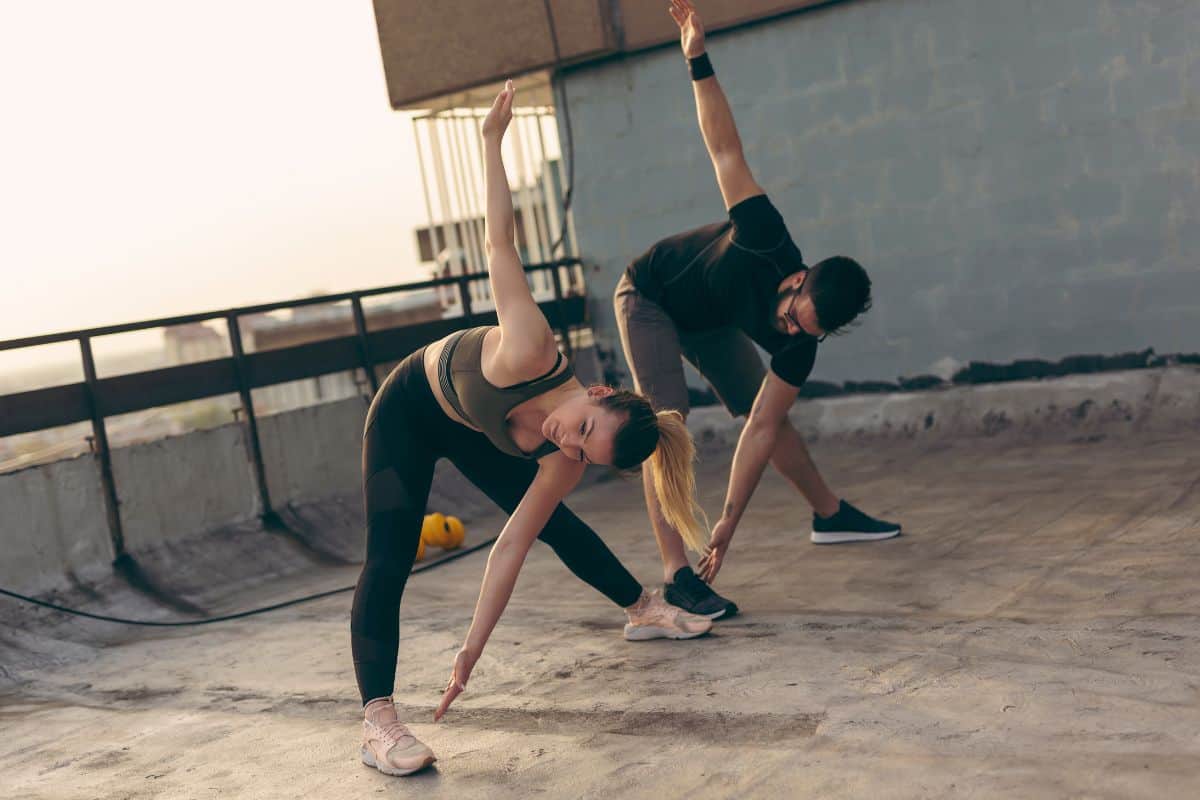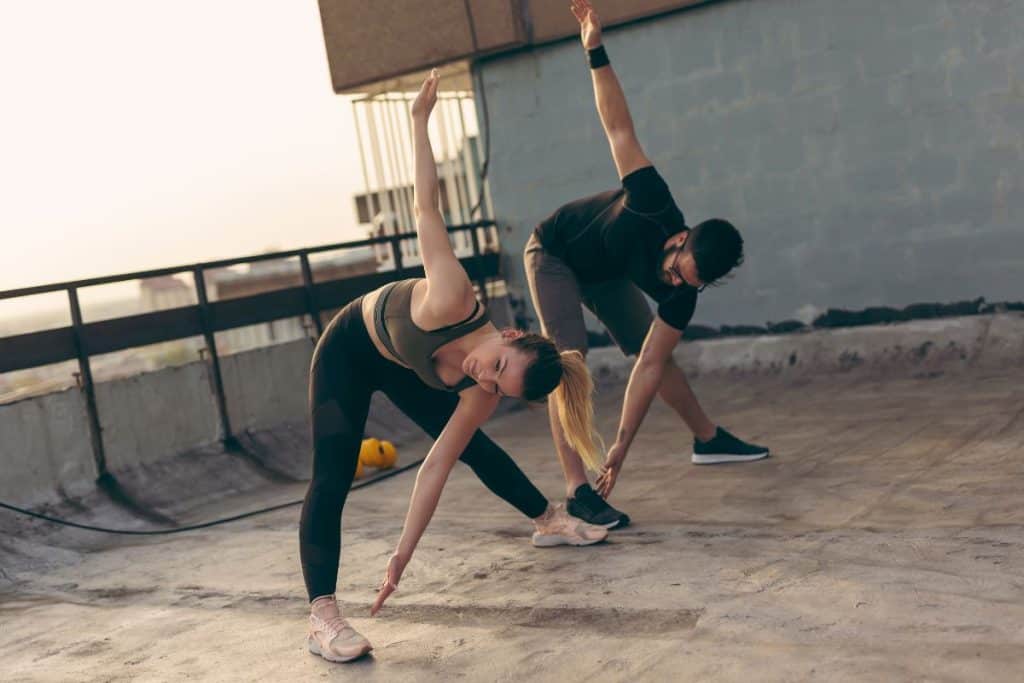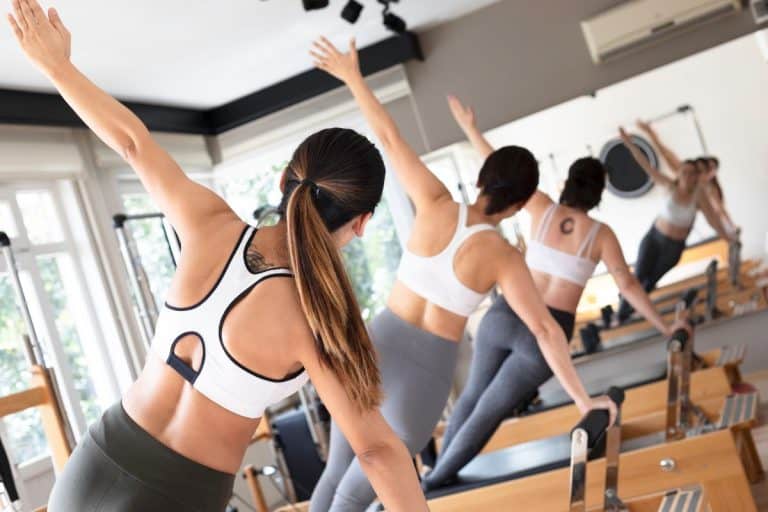
Integrating Dynamic Stretching into Your Fitness Program
TL;DR
Dynamic stretching prepares your body for exercise by improving flexibility, increasing blood flow, and enhancing coordination. Unlike static stretching, it mimics workout movements, reducing injury risk and optimising performance. Incorporating exercises like leg swings, arm circles, and walking lunges into your warm-up ensures smoother transitions into workouts and better athletic outcomes. Avoid common mistakes like overstretching and poor form to maximise benefits.
Table of Contents
Unlike static stretching, which involves holding a position, dynamic stretching incorporates movement, preparing your body for the physical demands ahead.
This form of stretching not only warms up your muscles but also improves flexibility, increases blood flow, and enhances mental focus. By understanding the benefits and specific techniques of dynamic stretching, you can integrate this practise seamlessly into your fitness programme. With various types of dynamic stretches available, such as arm circles and walking lunges, there’s a fit for every individual and workout.
Key Benefits of Dynamic Stretching
Performing dynamic stretching during warm-up before a race is effective for improving endurance running performance at a velocity equivalent to 90% VO2max in well-trained male runners.
Yamaguchi et al. (2015)
Dynamic stretching is integral to an effective exercise routine, preparing your muscles and joints through active movement. By progressively increasing blood flow, it enhances flexibility and range of motion, crucial for athletic performance.
This type of stretching mimics the movements of your upcoming activity, allowing for better rehearsal of movement patterns. Such practise improves coordination and power, crucial in reducing the injury risk during workouts.
Dynamic stretching also raises muscle temperature, lowering resistance and increasing flexibility. This preparation ensures your body is ready for more intense physical activities, leading to smoother transitions and optimised performance.
Key Benefits of Dynamic Stretching:
- Increases flexibility and range of motion.
- Enhances coordination and power.
- Raises muscle temperature, reducing injury risk.
- Ensures smoother transitions into exercise routines.
Incorporating dynamic stretches, such as leg swings and arm circles, at the start of your session prepares the body, ensuring muscles are adequately activated. As a result, individuals can engage in physical activities more effectively and safely.
Dynamic stretching improves knee joint position sense, increases oxygen uptake, and lowers lactate concentration, which contributes to enhanced agility performance in tennis players.
Trambadia & Jadav (2012)
Different Types of Dynamic Stretches
Dynamic stretching involves movements that actively warm up the body and increase blood flow to muscles and joints. This type of stretching prepares the body for upcoming physical activity by mimicking the motions of the exercise, reducing injury risk by easing the body into workout intensity.
Unlike static stretching, dynamic stretching is conducted through continuous motion rather than holding positions. These exercises enhance speed, agility, and flexibility, making them essential for improved athletic performance.
Arm Circles
Arm circles effectively warm up the shoulder muscles and joints. Stand with feet shoulder-width apart and extend arms to shoulder height. Move the arms in small circles, gradually expanding to larger ones.
This exercise prepares the upper body for activities requiring shoulder mobility, like lifting weights. Simple and adaptable, arm circles suit all fitness levels.
Leg Swings
Leg swings target the hip flexors, hamstrings, and glutes, warming up the leg muscles. Stand on one leg, swinging the other forward and backward in a controlled motion while engaging the abs for stability.
Ideal for preparing the legs for running or cycling, leg swings should stay within a safe range of motion. They help prevent strain by gradually increasing flexibility.
Walking Lunges
Walking lunges are dynamic stretches focusing on the leg and thigh muscles, crucial for speed and endurance. Step forward with one leg, keeping the front knee aligned with the ankle, and lower until both knees form 90-degree angles. Alternate legs to enhance flexibility and strength in the calves and thigh muscles.
As part of a warm-up routine, they prepare the lower body effectively for athletic activities.

Torso Twists
Torso twists improve spinal mobility and prepare the back for activities like swimming and running. Stand with feet shoulder-width apart, rotating the body side to side while arms are raised to shoulder height.
This stretch loosens upper body muscles and enhances core stability. Regularly practising torso twists increases flexibility and range of motion, ensuring efficient movement during workouts.
How to Incorporate Dynamic Stretching into Your Routine
To incorporate dynamic stretching into your routine, begin with six to ten minutes of low-to-moderate intensity exercises. Focus on activities that mimic the movements you plan to execute in your workout. For instance, high knees and butt kicks are excellent for preparing the body for running by increasing muscle temperature and flexibility.
Dynamic stretches should start with exercises involving continuous movement to gradually increase your range of motion. Include leg swings to activate thigh muscles and hip joints, arm circles for upper body flexibility, and hamstring stretches for thorough preparation. These exercises elevate core body temperature and limit injury risk.
Here’s a sample routine:
- Leg Swings: 10 reps per leg.
- Arm Circles: 10 circles per direction.
- High Knees: Perform for 30 seconds.
- Hip Circles: 10 circles per direction.
- Butt Kicks: Perform for 30 seconds.
By mimicking your workout’s movements and varying stretch positions, dynamic stretching effectively reduces joint stiffness and prepares muscles and joints for physical activities, enhancing overall athletic performance.
Timing Your Dynamic Stretches
Dynamic stretching is crucial at the beginning of your workout to activate muscles for exercise. A routine usually lasts two to ten minutes, depending on the workout’s complexity and target areas. For high-intensity exercises like running or cycling, aim for six to ten minutes of low-to-moderate intensity stretches.
Tailor your dynamic stretches to mirror the movements required in your workout. This approach ensures that all relevant muscle groups are adequately prepared, reducing the risk of injury. Engaging in dynamic stretching before exercise can boost blood circulation, enhance coordination, and improve athletic performance in activities such as sprinting and jumping.
Common Mistakes to Avoid
Dynamic stretching is an effective way to prepare for physical activities, but it’s essential to approach it correctly to prevent injuries. Avoid using generic stretches for every workout; instead, tailor them to your specific movements.
Proper breathing techniques, such as inhaling deeply before each stretch and exhaling during the movement, oxygenate muscles and enhance relaxation. Individuals with pre-existing conditions should consult a healthcare professional before beginning a new routine.
Moving Too Quickly
Moving too quickly during dynamic stretches can reduce their effectiveness and increase injury risk. Dynamic stretching should actively move joints and muscles through sports-specific motions, helping rehearse movement patterns.
Always focus on proper form to prevent pain or exacerbating existing issues like knee injuries.
Overstretching
Overstretching poses a significant risk, especially if dynamic stretches are performed with excessive force. This can lead to muscle strains among individuals not accustomed to such movements. It’s crucial to listen to your body—if any exercise causes pain, stop immediately to prevent injury.
Gradual progression and proper form are key to minimising overstretching risks.
Neglecting Proper Technique
Proper technique during dynamic stretching is essential to avoid injuries like muscle strains. Incorrect form can lead to increased injury risk, emphasising the importance of correct posture throughout each movement.
Consulting a certified professional for guidance can help maximise stretch effectiveness and reduce the risk of injury. Always prioritise maintaining correct form and listening to your body to ensure safety.
Tailoring Stretches to Your Workout
Dynamic stretching is ideal for warming up as it activates the muscles, preparing them for the workout ahead. Incorporating movements like high knees and butt kicks into warm-ups closely mimics running activities. Research indicates that dynamic stretching can enhance leg extension power, boosting performance compared to static stretching or not stretching at all.

Engaging in low-to-moderate intensity dynamic stretching for six to ten minutes before workouts helps raise core body temperature and improve joint lubrication. Post-workout, static stretching aids in muscle recovery, increases range of motion, and facilitates relaxation.
Specific Stretches for Cardio
Dynamic stretches can effectively prepare muscles for cardiovascular exercises such as running and swimming, potentially boosting performance and reducing injury risks. Incorporating a variety of dynamic stretches like side lunges and arm circles in your warm-up targets key muscle groups necessary for cardio activities.
This type of stretch routine increases core body temperature, enhances joint lubrication, and improves muscle flexibility, enabling more efficient movement patterns during the workout.
Specific Stretches for Strength Training
Dynamic stretching is crucial for preparing your body for strength training by moving through a range of motion that simulates upcoming exercises. It targets specific muscles and joints, like the legs and hips, essential for workouts.
Performing dynamic stretches before weightlifting can enhance blood flow to muscles, improving performance and reducing injury risk. Focused breathing during these stretches can further promote relaxation and effectiveness, making your warm-up routine more efficient.
The Role of Dynamic Stretching in Injury Prevention
Dynamic stretching plays a crucial role in injury prevention by increasing muscle temperature and improving the elasticity of tissues. This type of exercise involves active movements that take joints and muscles through their full range of motion, such as leg swings and arm circles. By incorporating dynamic stretches into a warm-up routine, athletes can activate the necessary muscles and joints, reducing the risk of strains and muscle pulls.
Dynamic stretching had a significant contribution to improving all physical performance measures among non-athletes if incorporated before the activity, while static stretching negatively affected agility and balance.
Khan et al. (2023)
Studies highlight the effectiveness of dynamic stretching in performance preparation compared to prolonged low-intensity efforts. It enhances blood flow and gradually expands movement ranges, decreasing injury risk during physical activities. Dynamic stretching is particularly beneficial when paired with proper nutrition, hydration, and adequate rest to boost athletic performance and muscle recovery.
To maximise the benefits and minimise injury risk:
- Start with dynamic stretches before engaging in physical activities.
- Focus on continuous movement, such as walking lunges and shoulder height arm circles.
- Complement with static stretches post-exercise to improve flexibility.
These methods can enhance the overall effectiveness of an exercise routine, supporting both safety and performance.
Enhancing Mental Focus Through Dynamic Stretching
Dynamic stretching can significantly enhance mental focus by preparing both body and mind for physical activity. By incorporating dynamic stretches into your warm-up routine, you increase readiness and alertness, positively impacting your mental state as you gear up for your workout. This type of exercise promotes oxygenation of the muscles, which not only relaxes them but also supports greater concentration during workouts.
Engaging in dynamic stretches mimics the movements you’ll perform during your upcoming activity, allowing for a form of mental rehearsal. This process sharpens both focus and coordination, making your transitions smoother. The continuous movement involved in dynamic stretching boosts blood flow and elevates muscle temperature, contributing to heightened sensory awareness and further enhancing mental focus.
List of dynamic stretches to boost mental focus:
- Arm Circles: Enhances shoulder mobility.
- Leg Swings: Activates thigh muscles and hip joints.
- High Knees: Improves active movement and coordination.
- Torso Twists: Engages upper body and core.
Incorporating these stretches before exercise not only warms up your body but also primes your mind, elevating overall athletic performance and minimising injury risk.
References
Taichi Yamaguchi et al. "Acute Effect of Dynamic Stretching on Endurance Running Performance in Well-Trained Male Runners." Journal of Strength and Conditioning Research, 29 (2015)
Hardik Trambadia et al. "Effects of Static and Dynamic Stretching on Agility Performance in Tennis Players." Indian Journal of Physiotherapy and Occupational Therapy—An International Journal, 6 (2012).
Shomaila Hassan Khan et al. "Static versus dynamic stretching; short term effects on physical performance in non-athletes- a randomized clinical trial." The Rehabilitation Journal (2023).



